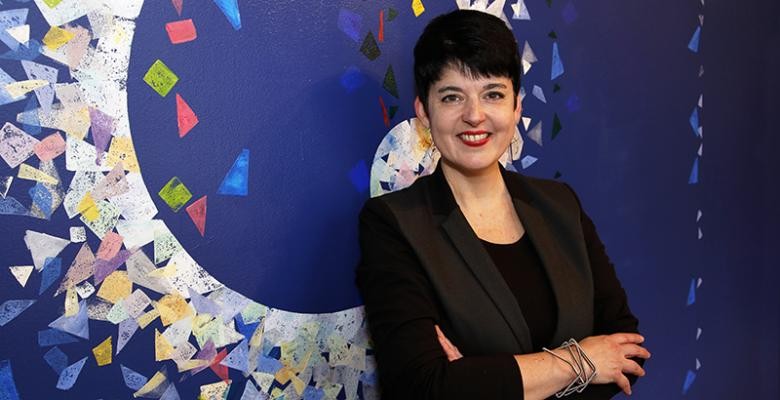Moving day is here at last: When Columbia’s School of the Arts MFA thesis exhibition opens on April 22, the gallery will have not only expanded its wall space but also positioned itself to raise its public profile and forge new relationships with arts institutions in Harlem and throughout the city.
“With this comes a doubling of both ambition and resources,” said Cullen, who spent more than 15 years at El Museo del Barrio, a center of Latino art and culture in New York City. That experience will serve her well as she aims to engage the many artists in northern Manhattan—emerging, mid-career and mature painters and sculptors with a wide range of experiences—especially those in the Harlem, El Barrio and Washington Heights neighborhoods.
“We want to be a place where artists and art lovers feel connected, so we have been speaking to them, hearing their needs and offering opportunities and programming that is of interest,” she said. “As a gallery, we need to communicate that.”
The Lenfest Center was designed by the Renzo Piano Building Workshop to be open and accessible, offering spaces for art, film and live performances sponsored by the School of the Arts and the Wallach. The gallery’s double-height space and increased size can now accommodate large-scale sculpture and other oversized artworks, which didn’t fit in its Morningside campus location. Dramatic floor-to-ceiling windows with views of the city can be completely screened when delicate or historical works on paper are exhibited. In front of the building a small, publicly accessible square lined with honey locust trees opens onto 125th Street and will welcome community members with art and performances.
The multimedia MFA thesis exhibition showcases the work of visual arts students who are completing their degrees. The University community will have easy access to the student work for the first time; previously, a Long Island City gallery hosted the show because of the lack of space on campus.
The new, more accessible gallery is a boon to the Wallach’s mission. “The Wallach is at the intersection of art and education,” Cullen said. “We feature the newest visual arts research conducted at Columbia, making the University’s scholarship available to the public.”
Uptown, opening on June 2, follows the thesis exhibition. It is a survey of contemporary work by artists from northern Manhattan and will feature collaborative projects with institutions across Harlem, highlighting the neighborhood’s vibrant cultural scene. The focus then shifts to architecture with Living in America: Frank Lloyd Wright, Harlem and Modern Housing, which examines Wright’s housing design in relationship to the rise of modern housing design in Harlem. The show brings together those two timelines for the first time and overlaps with Frank Lloyd Wright at 150: Unpacking the Archive at the Museum of Modern Art, which will celebrate the acquisition of the Frank Lloyd Wright archives by the museum and Columbia’s Avery Architectural and Fine Arts Library.
Exhibits planned for 2018 include Posing Modernity: The Black Model from Manet to Matisse and Beyond. Inspired by a dissertation for the Department of Art History and Archaeology, it will be the first exhibition to examine the evolving depiction of the black female model, with major works from institutions across the United States and Europe. Later, Arthur Mitchell: Harlem’s Ballet Maverick, will explore the life and accomplishments of the New York City Ballet’s first African-American principal dancer. Mitchell, who founded the Dance Theatre of Harlem, donated his archives to Columbia’s Rare Book and Manuscript Library in 2015.
The Wallach Gallery was established by a gift from Miriam Wallach and Ira D. Wallach (CC’29, LAW’31), a businessman and philanthropist. It has long played an integral role within the University’s art history program, with graduate students, faculty and outside scholars serving as curators.
For the first time since it was founded in 1986, the Wallach will be open year-round, with longer hours. “I imagine the Lenfest Center as a hive, a multidisciplinary arts complex where we offer access to various types of art and creative artists’ processes,” Cullen said. “It’s so important for Columbia to be opening a publicly accessible arts center on our new Manhattanville campus; it’s a huge statement for the University.”
